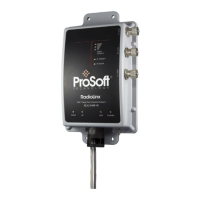RLX2 Industrial Hotspot Series
Page 200 of 212 ProSoft Technology, Inc.
June 15, 2015
IP Address
A 32-bit identification number for each node on an Internet Protocol network. These
addresses are represented as four sets of 8-bit numbers (numbers from 0 to 255),
separated by periods ("dots").
Networks using the TCP/IP Protocol route messages based on the IP address of the
destination. Each number can be 0 to 255. For example, 192.168.0.100 could be an IP
address. Each node on the network must have a unique IP address.
K
Key
A set of information (often 40 to as much as 256 bits) that is used as a seed to an
encryption algorithm to encrypt (scramble) data. Ideally, the key must also be known by
the receiver to decrypt the data.
L
LAN
A system of connecting PCs and other devices within the same physical proximity for
sharing resources such as internet connections, printers, files, and drives. When Wi-Fi is
used to connect the devices, the system is known as a wireless LAN or WLAN.
LED
Light-emitting diode.
Line of Sight (LoS)
A clear line from one antenna to another in a long-range wireless network.
Link point
The graphical point next to a radio icon that represents the connection point for RF
communications between radios. An RF connection between two radios is called an RF
Link and is represented as a graphical black line between the radio’s link points.
M
MAC ID
Media Access Control address. Every 802.11 device has its own MAC address. This is a
unique identifier used to provide security for wireless networks. When a network uses a

